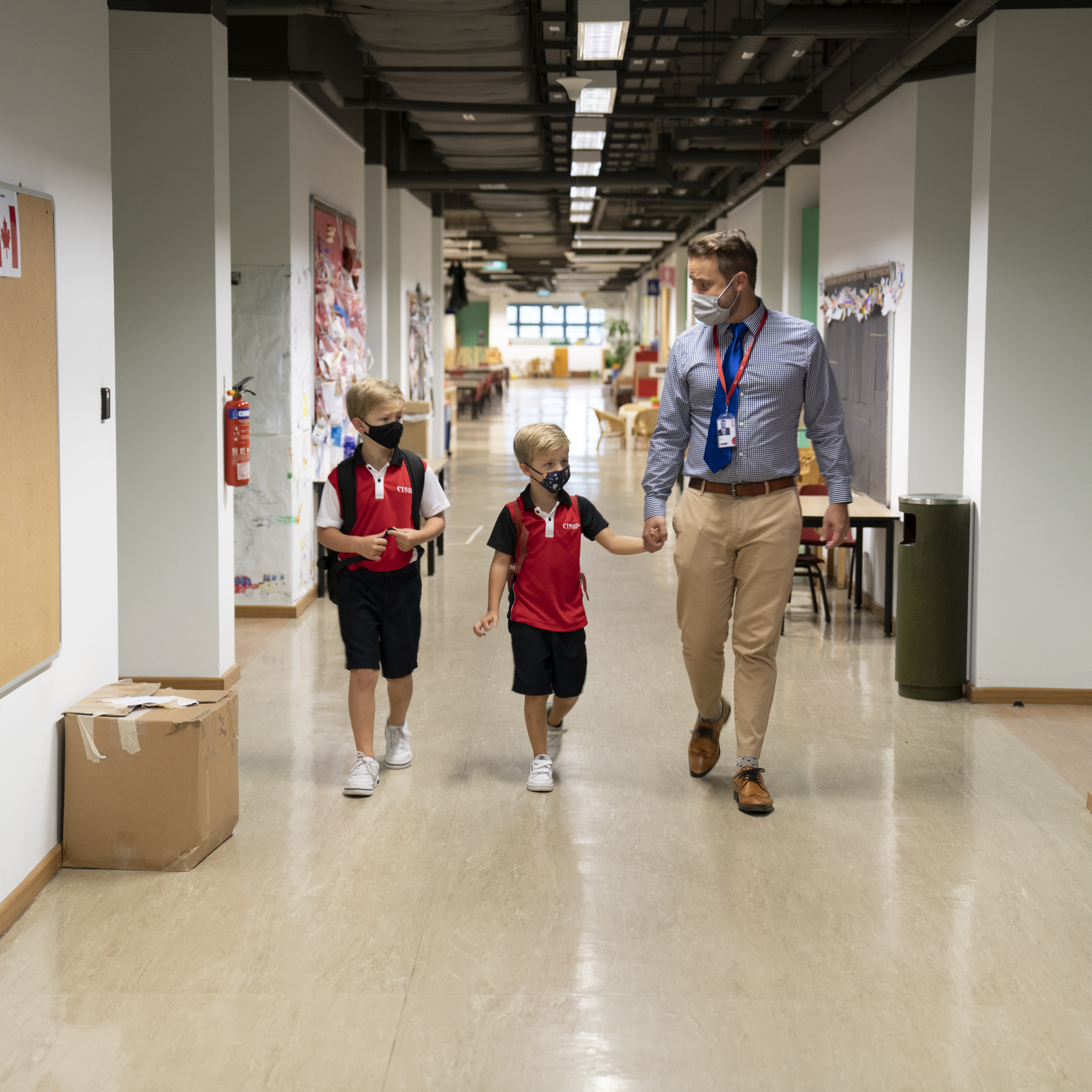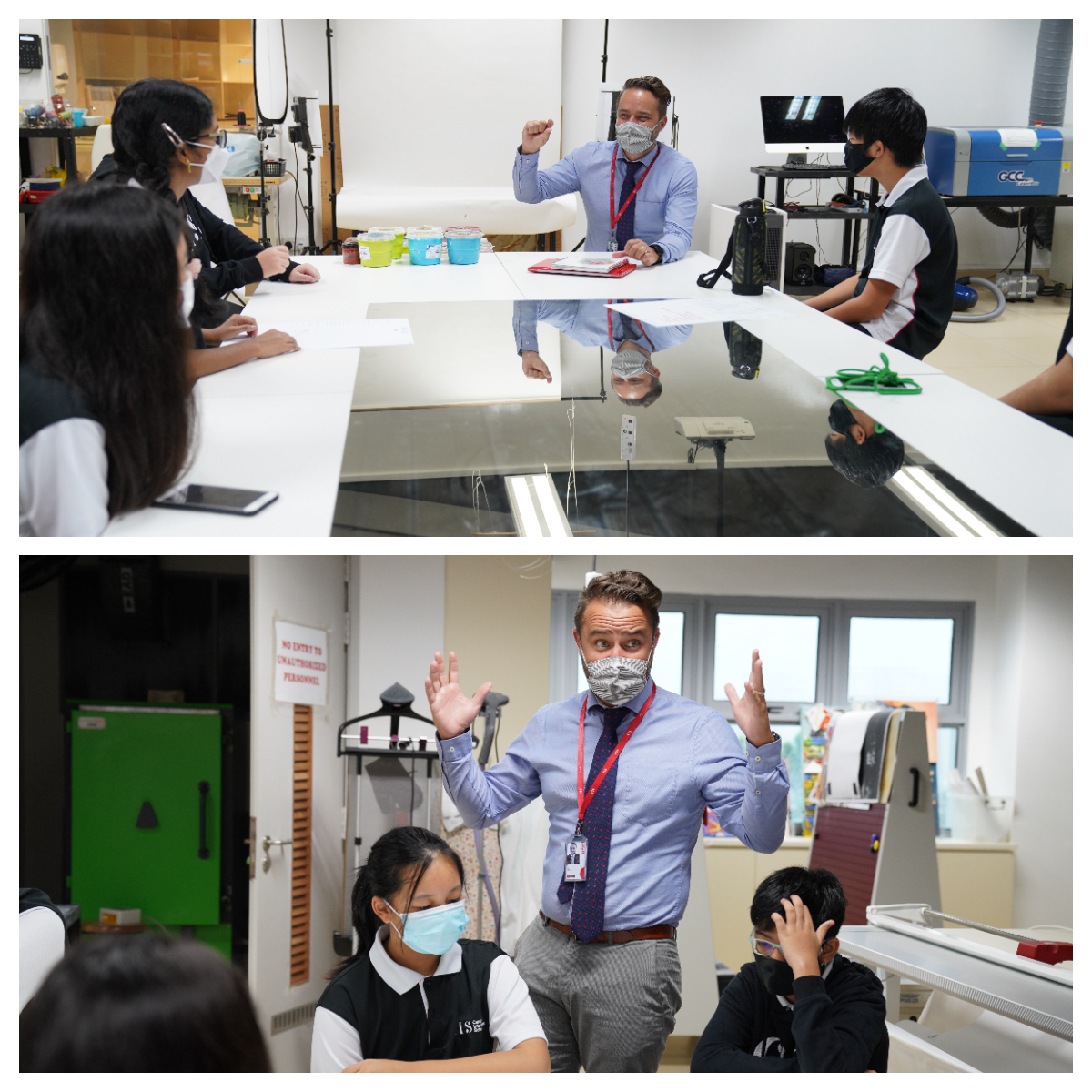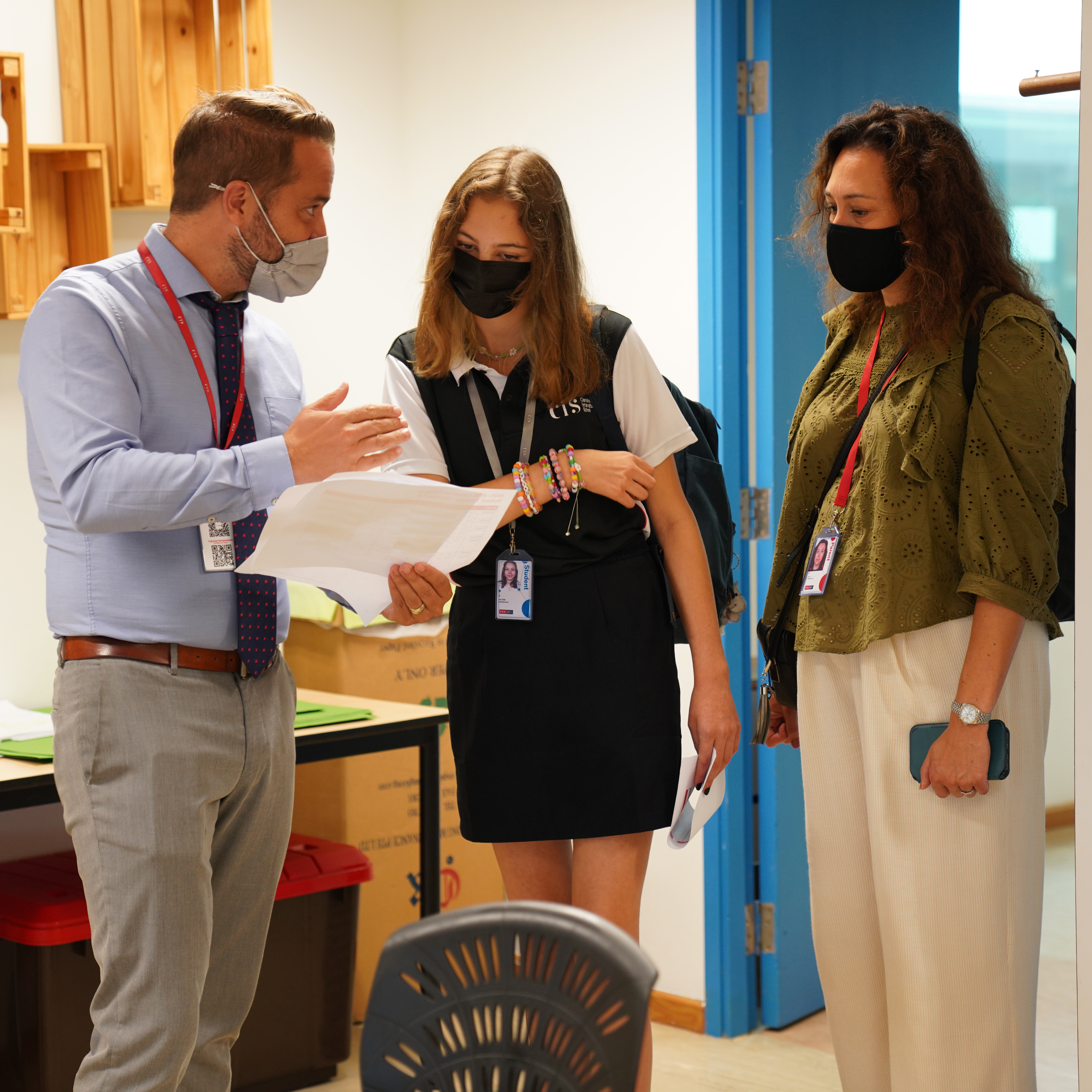A typical school day for secondary vice principal Nick Kolentse
Have you ever wondered what a principal might do during a school day? Here are some examples of the types of activities that keep Nick Kolentse, our secondary vice principal, busy.
7.30am: A time to plan and connect
Mornings start early for Nick, who is usually in his office by 7.30am. Nick uses this time to have conversations with teachers, check schedules, attend senior council planning meetings and talk to his primary aged children about the day ahead.
8am: Primary drop-off

Like most CIS parents, Nick enjoys drop-offs and discussing the upcoming school day. As he walks his young sons to class, they chat about what exciting things they are exploring, questioning and trying to understand.
8.30am: Advisory

Nick meets his grade 7 advisory group students every morning. On Mondays, sessions last 50 minutes and together, Nick and his students reflect on their weekend and look ahead to the upcoming week. Another key component of this time includes individual discussions around short-term and long-term academic goals that have been set at the beginning of the year. This helps students develop the skills essential for success, and feel confident they have someone to turn to if they need help or support.
11am: Meeting a new family

After morning meetings with teachers and leadership teams, Nick takes the time to personally meet with a family whose grade 9 daughter will be starting school the next day. He gives them a tour of the campus and introduces the student to teachers and classmates to help ease that first day anxiety. As they tour the campus, he talks about the Middle Years Programme (MYP), the eight-day timetable and what to expect at CIS.
12pm: Planning/reflective conversations with teachers
Nick checks in with teachers on their specific yearly goals that will positively impact the teaching and learning happening in their classrooms. He provides feedback to them based on classroom observations and educational best practices. This process helps ensure the implementation of differentiated instructional methods at CIS, and makes our teaching unique.
1pm: Interacting with grade 7s during lunchtime

This is one of Nick's favourite times of the day. As he catches up with students informally, he is able to learn more about them and what their hobbies are. It also helps students understand that Nick is someone who cares, and that they can share what is going on in their life at school and outside if needed.
2pm: Visual arts lesson

MYP/DP visual arts teacher Bryn Barnard has asked Nick to join him in a lesson on perspective drawing. Why? Nick studied art history in Florence, Italy as an undergraduate. Nick joins classes from time to time and shares his knowledge, talks about his experiences and gives students his insights as a learner himself. These adhoc arrangements also allow Nick to form a better picture of the overall student experience, and the programmes and activities they go through daily. This aids him in planning for academic programmes to implement.
3.30pm: Supervision

All of our teachers and academic staff have supervision duties to ensure students are safe and to troubleshoot as needed. Supervision also provides a great opportunity to connect, get to know and have some meaningful conversations with students.
Students know they can find Nick in the atrium on Monday afternoons or at the bus bay on Friday afternoons.
4pm: Staff meetings with various teams
After the school day has finished, Nick supports subject level teams as they plan for interdisciplinary learning units of study in the MYP.
Collaborative meetings focus on updating assessment methodologies as well as the feedback strategies that teachers can put in place to drive academic growth. Assessment priorities ensure that feedback is data-informed, student-centered and teacher-led.
Thank you for allowing us to tag along, Nick. Want to know more about our CIS community? Let us know who we should feature next!